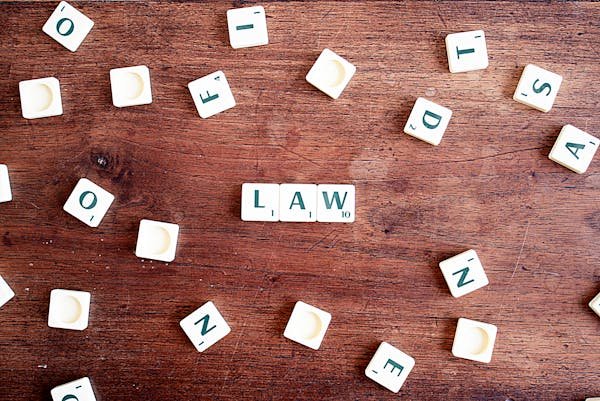The United States legal system is a complex framework designed to uphold justice, protect rights, and resolve disputes. At its core are law firms and the lawsuits they handle, which play pivotal roles in both civil and criminal matters. This article delves into the intricacies of law firms and the lawsuit process in the U.S., providing a comprehensive overview for those seeking to understand or engage with the system.
The Role of Law Firms in the U.S. Legal System
Law firms in the United States are integral to the legal landscape. They offer specialized legal services across various practice areas, including corporate law, criminal defense, family law, and personal injury. These firms range from small, boutique practices to large multinational entities with offices worldwide.
Types of Law Firms
- Solo Practitioners: Individual attorneys who operate their own practices, often focusing on specific areas of law.
- Small Firms: Typically consist of a few attorneys, offering personalized services in niche legal areas.
- Large Firms: Employ numerous attorneys and support staff, handling complex and high-profile cases across multiple jurisdictions.
- In-House Counsel: Legal departments within corporations that manage the company’s legal affairs.
Key Functions of Law Firms
- Legal Representation: Advocating for clients in court and legal proceedings.
- Legal Advice: Providing counsel on legal rights, obligations, and strategies.
- Document Drafting: Preparing contracts, wills, and other legal documents.
- Dispute Resolution: Mediating and negotiating settlements to avoid litigation.
The Lawsuit Process in the United States
A lawsuit is a legal action taken by an individual or entity (plaintiff) against another (defendant) to resolve a dispute. The process is governed by both state and federal laws, and while it can vary, the general steps are as follows:
1. Pre-Litigation
Before filing a lawsuit, parties often attempt to resolve disputes through negotiation or alternative dispute resolution methods like mediation or arbitration. If these efforts fail, the plaintiff may proceed with litigation.
2. Filing a Complaint
The lawsuit officially begins when the plaintiff files a complaint with the appropriate court. This document outlines the facts of the case, the legal basis for the claim, and the relief sought. The defendant is then served with a summons and a copy of the complaint.
3. Defendant’s Response
Upon receiving the complaint, the defendant has a specified period to respond, typically 20 to 30 days. The response may include:
- Answer: Denying or admitting the allegations.
- Counterclaim: Asserting a claim against the plaintiff.
- Motion to Dismiss: Arguing that the case should be dismissed for legal reasons.
4. Discovery
Discovery is the pre-trial phase where both parties exchange information relevant to the case. This can include:
- Interrogatories: Written questions requiring written answers.
- Depositions: Oral questioning of parties and witnesses under oath.
- Requests for Production: Demands for documents and evidence.
- Requests for Admissions: Statements that one party asks the other to admit or deny.
5. Pre-Trial Motions
Before the trial, either party may file motions to resolve issues or narrow the scope of the case. Common motions include:
- Motion for Summary Judgment: Arguing that there are no material facts in dispute and the case can be decided as a matter of law.
- Motion to Exclude Evidence: Seeking to prevent certain evidence from being presented at trial.
6. Trial
If the case proceeds to trial, both parties present their arguments, evidence, and witnesses. Trials can be:
- Bench Trials: Heard and decided by a judge.
- Jury Trials: Heard and decided by a jury of peers.
The trial process includes:
- Opening Statements: Outlining each party’s case.
- Presentation of Evidence: Introducing documents, exhibits, and witness testimony.
- Closing Arguments: Summarizing the case and urging a particular verdict.
- Verdict: The judge or jury delivers a decision.
7. Post-Trial Motions and Appeals
After the trial, the losing party may file post-trial motions, such as a motion for a new trial or a motion for judgment notwithstanding the verdict. If these are denied, the party may appeal the decision to a higher court.
8. Enforcement of Judgment
If the plaintiff wins, they may need to take steps to collect the judgment, which can include garnishing wages or placing liens on property.
Class Action Lawsuits
Class action lawsuits allow a group of people with similar legal claims to sue a defendant collectively. This is often used in cases involving consumer fraud, defective products, or employment discrimination. The process includes:
- Certification: The court must certify the class, determining that the claims are common and that the class representatives adequately represent the group.
- Notice: Potential class members are notified and given the option to opt-in or opt-out.
- Settlement or Trial: The case proceeds to settlement or trial, with any judgment or settlement applying to all class members.
Recent Trends and Notable Cases
The legal landscape in the U.S. is continually evolving. Recent developments include:
- Corporate Accountability: Increased litigation against corporations for environmental violations, consumer protection, and employment practices.
- Civil Rights: Ongoing lawsuits addressing issues like discrimination, voting rights, and police misconduct.
- Technology and Privacy: Legal actions related to data breaches, privacy violations, and intellectual property rights.
Conclusion
Understanding the U.S. legal system, law firms, and the lawsuit process is essential for navigating legal challenges. Whether you’re considering filing a lawsuit, seeking legal representation, or simply interested in how the system operates, this overview provides a foundational understanding. The legal system strives to ensure justice and fairness, though it is complex and can be daunting. Consulting with a qualified attorney can provide guidance tailored to your specific situation.
